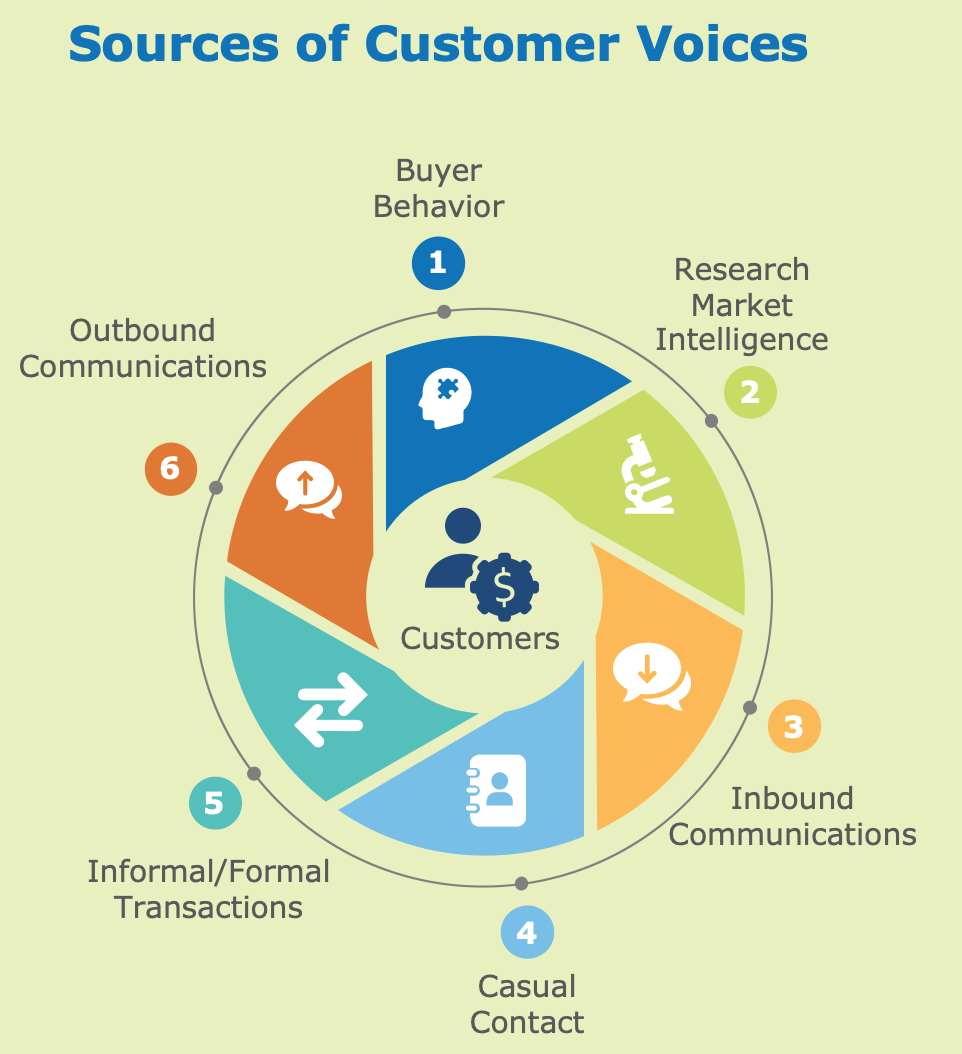To complement our series of QuickReads covering measurement, we will now explore Failure Demand (FD).…

ChangeWise Quick Read: Measurement Series: Sourcing Customer Voice
To continue our series of helpful articles on measurement, we take a quick look at sourcing Voice of Customer (VoC). This is vitally important if we want to satisfy our customer needs and wants, improve the capabilities/attributes of our product or service, remain competitive in terms of cost, quality and delivery – and build loyalty.
Sounds good…..because I’m not sure where to start!
No problem, this is often the case! However, the key thing is to ensure you are seeking your customer’s voice and specifying value from their perspective. Many organisations make the mistake of thinking they already know this information. It may be true that they understand their products and services in impressive detail, but seeing things from a customer’s perspective is actually pretty difficult. This is why collecting VoC is crucial.
🏆 Top Tip! Before reading further, make sure you know who your customers are; both internally and externally. Take a look at our QuickRead 5 Principles of Lean Part 1/5 Specify Value if you need help with this.

Photo by Jon Tyson on Unsplash
‼️ Remember ‼️ VoC data gathers both positive and negative feedback to define value.
Ok, that makes sense……but where will I find my VoC?
Finding VoC can be tricky, especially when customers are not all the same. People want different things from a product or service, so it’s important to make sure you are gathering information from a variety of sources.
The easiest way to get started is to think about how your internal and external customers communicate with you today. This is often done using a variety of mediums, so let’s use the diagram below to help get us started:

1: Buyer Behaviour
Think about your customer’s buying habits. Are these habits telling you anything? For example, are there any frequency patterns? Are you busier during certain times of the day? How do your customers like to purchase your products? Online/telephone/face to face? Have you seen a recent increase in contract cancellations/new contracts/referrals?
When looking at these behaviours it is equally important to understand why customers choose to say ‘no’ to something……don’t just focus on the ‘yes’. For example, if 80% of your customers contact you via email, don’t assume email is the preferred option. You need to understand why email is utilised so much; is this because they experience long wait times when trying to make contact via telephone?
2: Market Research
Market research can be conducted using qualitative and quantitative methods including interviews, surveys and focus groups. Social media is also a great way to understand what customers are saying about your product or service. Understanding any new trends, opportunities or products/services offered by competitors will help you create sound VoC.
3: Inbound Communications
This category not only includes obvious VoC such as complaints, product returns and contract cancellations, it also encompasses information your customers are seeking about your product/service and organisation. It is vital we record and categorise inbound VoC because customers are actively trying to tell us something. For example, if we receive high volumes of calls regarding the information contained within an invoice, we should assume there is an issue somewhere…..perhaps the wrong data is being sent? Or maybe the invoice is unclear? Inbound customer contact is great because it presents the opportunity for informative, two-way conversations and acts as a tool to find out what our customers really need and want.
🏆 Top Tip! Remember ‘Gemba’ walking (going to the place where the works happens)? A great way to understand our customers and gain useful insight is by call listening, this is where we listen-in to an agent handling an inbound customer’s live call. We can access a wealth of insight by hearing how our customer interacts with the agent, what they actually say (versus what the agent captures in the short-hand notes on the CRM system), their tone/attitude and of course, reflect on whether we are providing what they want, where they want it – and in a way that meets their expectations. This is far richer data than a 3-question Customer Satisfaction survey!
4: Casual Contact
With casual contact, think about the reactions you have when you tell people who you work for. What do they say? What perceptions do they have of your company brand? Have they experienced issues or poor customer service? What are their expectations of your product? You will start to hear subtle themes….all great VoC!
5: Informal/Formal Transactions
Completing formal questionnaires and interviews are helpful research techniques. You can really drill down into the specifics of your customer needs and wants. Interviews allow us to question further and obtain detailed explanations about value. Questionnaires allow for more complexity around questioning. Both options enable you to reach a variety of customer types.
Informal VoC is equally as insightful and can be found on blogs, forums and reviews. Analyzing this data will produce useful statements regarding needs and wants.
‼️ Remember ‼️ At this stage we are simply trying to identify VoC, we are not trying to solve anything; do not jump to any conclusions at this point. In fact, you may even find that your customer offers a solution rather than articulating their real needs. Be wary of this – the solution may not provide what they are really looking for.
6: Outbound Communications
What information is available regarding your proactive outbound communications? How are current and potential customers reacting to it? Are there any interesting trends? Outbound communication can have a bad reputation, but managed professionally and carefully, it can provide access to a wide variety of VoC, specifically new customers.

Photo by Jacqueline Munguía on Unsplash
In Summary
Access to value-add VoC will enable your business to provide the needs and wants of your customers, remain competitive and differentiate yourself from the rest of the market. Start by investigating the VoC you already have, then look at the gaps. Sometimes we simply don’t have access to the facts needed……so we have to go out and get it!
Once you have collected and categorised your VoC, the next step is translating the data into something measurable called ‘CTQ’s’ (Critical to Quality) – and we will talk about this in our next QuickRead!
Need some help and direction understanding your Voice of Customer? Get in touch with the ChangeWise team at info@changewise.co.uk and let’s talk about how we can help.
ChangeWise believes employee engagement is the foundation for successful Change. Training and coaching your people to use simple continuous improvement techniques will enable your organisation to continuously adapt and stay ahead in a constantly changing and challenging environment.
For updates and interesting Lean Change insights, connect with us on LinkedIn.



